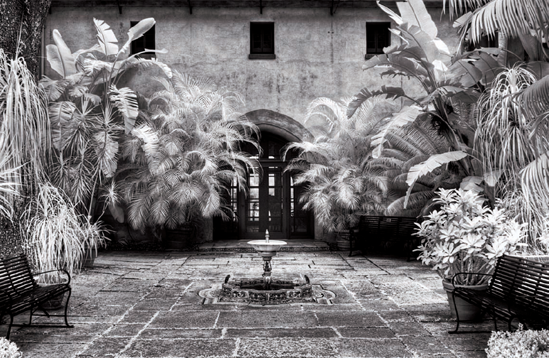Chapter 6. PLANNING AHEAD FOR HIGH DYNAMIC RANGE AND PHOTOMERGE
High Dynamic Range (HDR) photography is exciting, creative, and technically amazing. HDR entails shooting the same scene at various exposures and merging the images afterward using software applications such as Adobe Photoshop or Photomatix Pro. A very recent addition to the tools available for use in the digital darkroom, HDR photography allows you to record everything in the original scene — the highlights, the mid-tones, and the shadows — with incredible detail. You can easily shoot several exposures of a scene and merge the images through software, and the process enables you to create images with phenomenal dynamic range (see 6-1).
An IR or color photograph created using HDR techniques incorporates a range of data that your digital camera may not be able to record in a single exposure. HDR images allow you to see the brightest highlight areas, and the darkest shadows at the same time. The highlights are not washed out and the detail is not lost in the shadow areas.

Figure 6-1. ABOUT THIS PHOTO IR and HDR work beautifully together as shown in this resultant image photographed at the Pinewood Estate in the historic Bok Sanctuary, Lake Wales, Florida. I used three exposures with various shutter speeds to merge into HDR. Taken at ISO 200, f/11, with a Nikkor 24–70mm lens.
HDR COMPARED TO USING A GRADUATED NEUTRAL-DENSITY ...
Get Digital Infrared Photography Photo Workshop now with the O’Reilly learning platform.
O’Reilly members experience books, live events, courses curated by job role, and more from O’Reilly and nearly 200 top publishers.

